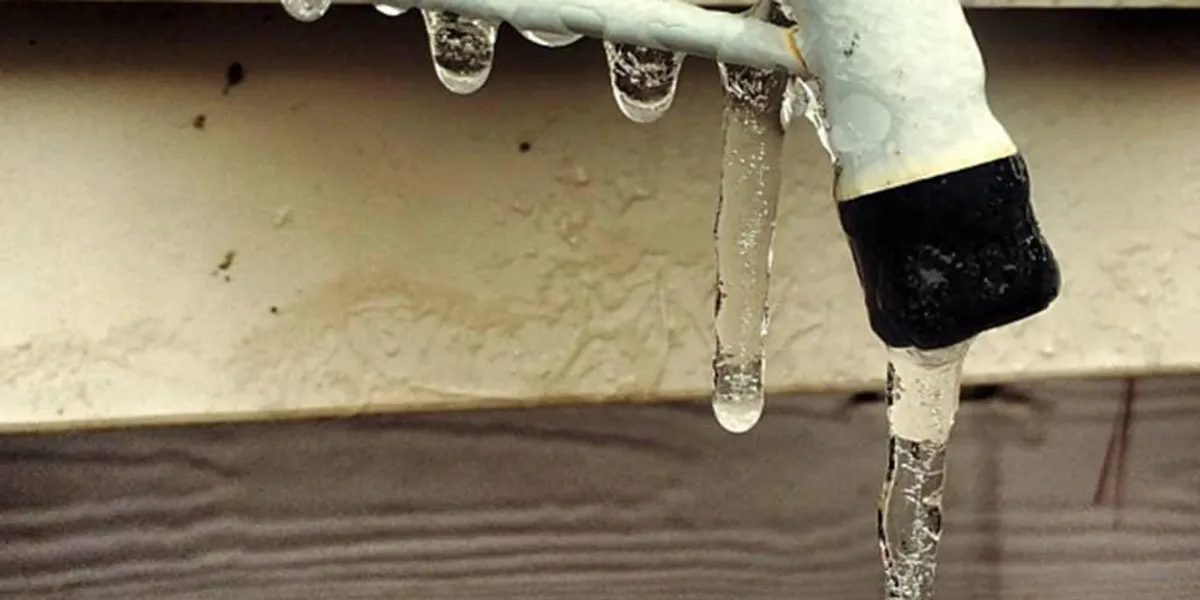The article author is making a few great points about Winter Plumbing Precautions: Preventing Frozen Pipes overall in this post which follows.

Cold weather can ruin your plumbing, particularly by freezing pipelines. Right here's just how to avoid it from taking place and what to do if it does.
Intro
As temperatures decrease, the danger of icy pipelines boosts, possibly causing costly fixings and water damage. Recognizing just how to prevent frozen pipes is crucial for property owners in chilly climates.
Prevention Tips
Protecting prone pipes
Cover pipelines in insulation sleeves or make use of warmth tape to safeguard them from freezing temperatures. Concentrate on pipelines in unheated or external locations of the home.
Home heating strategies
Maintain indoor rooms adequately heated up, specifically areas with plumbing. Open up cupboard doors to permit warm air to flow around pipes under sinks.
How to identify icy pipelines
Try to find reduced water flow from taps, uncommon odors or sounds from pipelines, and visible frost on revealed pipelines.
Long-Term Solutions
Structural adjustments
Consider rerouting pipelines away from outside wall surfaces or unheated areas. Include added insulation to attics, cellars, and crawl spaces.
Updating insulation
Invest in top notch insulation for pipelines, attic rooms, and walls. Appropriate insulation assists keep consistent temperatures and reduces the danger of icy pipelines.
Protecting Exterior Pipes
Garden pipes and outdoor faucets
Disconnect and drain pipes garden pipes prior to winter months. Set up frost-proof faucets or cover exterior faucets with protected caps.
Recognizing Icy Pipelines
What triggers pipes to freeze?
Pipes ice up when revealed to temperature levels below 32 ° F (0 ° C) for prolonged durations. As water inside the pipelines ices up, it broadens, putting pressure on the pipeline walls and potentially triggering them to break.
Dangers and damages
Icy pipes can result in water system disturbances, home damage, and costly repair work. Burst pipes can flooding homes and cause considerable structural damage.
Indicators of Frozen Pipeline
Recognizing frozen pipelines early can prevent them from rupturing.
What to Do If Your Pipelines Freeze
Immediate activities to take
If you think frozen pipelines, keep taps open to soothe pressure as the ice melts. Utilize a hairdryer or towels soaked in hot water to thaw pipes gradually.
Verdict
Stopping frozen pipes needs positive procedures and quick reactions. By comprehending the reasons, indications, and safety nets, house owners can protect their plumbing throughout cold weather.
6 Proven Ways to Prevent Frozen Pipes and Protect Your Home
Disconnect and Drain Garden Hoses
Before winter arrives, start by disconnecting your garden hoses and draining any remaining water. Close the shut-off valves that supply outdoor hose bibs and leave the outdoor faucet open to allow any residual water to drain. For extra protection, consider using faucet covers throughout the colder months. It’s also important to drain water from any sprinkler supply lines following the manufacturer’s directions.
Insulate Exposed Pipes
Insulating your pipes is an effective way to prevent freezing. Pipe insulation is readily available at home improvement stores and is relatively inexpensive. Pay close attention to pipes in unheated areas such as the attic, basement, crawl spaces, or garage. Apply foam insulation generously to create a buffer against the cold. You can also wrap your pipes in heat tape or thermostat-controlled heat cables for added warmth.
Seal Air Leaks
Inspect your home for any cracks or openings that could let in cold air. Seal any holes around the piping in interior or exterior walls, as well as the sill plates where your home rests on its foundation. Additionally, make sure to keep your garage door closed unless you’re entering or exiting. Leaving it open creates a significant air leak that can lead to frozen pipes.
Allow Warm Air Circulation
During cold snaps, it’s essential to allow warm air to circulate evenly throughout your home. Leave interior doors ajar to promote better airflow. Open kitchen and bathroom cabinets to help distribute heat consistently around the rooms. If you have small children or pets, be sure to remove any household chemicals or potentially harmful cleaners from open cabinets for safety.
Let Faucets Drip
A small trickle of water can make a big difference in preventing ice formation inside your pipes. When temperatures drop significantly, start a drip of water from all faucets served by exposed pipes. This continuous flow helps prevent the water from freezing. Additionally, running a few faucets slightly can relieve pressure inside the pipes, reducing the chances of a rupture if the water inside does freeze.
https://choateshvac.com/6-proven-ways-to-prevent-frozen-pipes-and-protect-your-home/

I hope you liked our excerpt about 6 Ways to Prevent Frozen Pipes. Thanks a lot for taking time to browse our short article. Do you know somebody else who is involved in the topic? Feel free to promote it. Thanks for being here. Don't forget to pay a visit to our blog back soon.
Need Help? Hire Us Now!